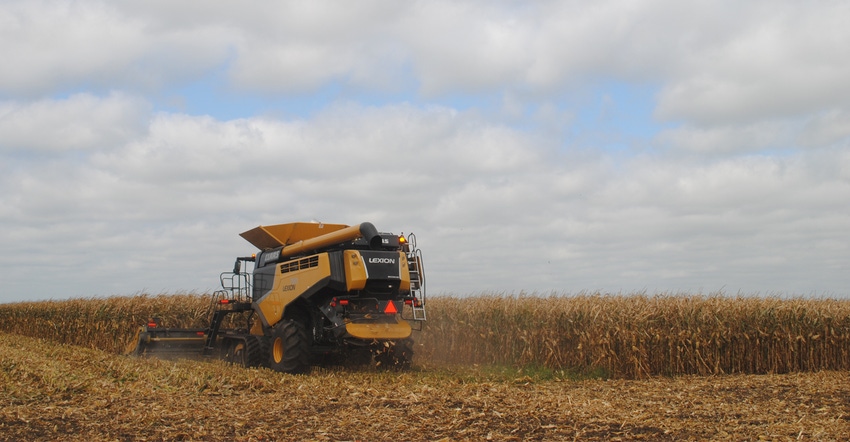October 2, 2019

It is not a good idea to say things like, "This is the wettest growing season we've ever had." Absolute statements such as that are difficult to back up. This past growing season might have been one of the most challenging we've had in recent memory, but there are other years that come to the minds of farmers who have been around for a while.
One comparative growing season that I can recall in our region is 1993. The season started out wet and cold. I buried my tractor in the mud several times trying to disk wet spots, and in many cases, whole fields that were submerged during varied times of the spring.
I finished planting corn June 4 that year, and I didn't finish planting soybeans until July 1. About one-quarter of our fields were too wet to plant at all. Unfortunately, the wet, cold weather carried into the summer months. It was cloudy and cool through July and August, with only a few days in our neighborhood that made it above 90 degrees.
Corn didn't mature on time. Soybeans, by fall, didn't drop their leaves, and the weeds that were inevitable during a wetter-than-normal growing season wouldn't freeze and dry up.
Waterhemp was a real problem in our soybean fields that year along West Bow Creek, slowing soybean harvest, even on the drier days. By the time we were ready for corn harvest, moisture still was in the upper 20% range. The corn never matured properly. We tried to harvest a field here and there, hoping to find a drier variety. But all of the corn was about the same.
Finally, as November rolled around, we harvested anyway. Yields were high, but test weight and quality were low. I recall finishing corn harvest that year in mid-December as the snow started flying. We had corn piled everywhere, and in every available bin.
Temperatures dropped low enough to protect some of the wetter corn from spoiling. We ground corn from every possible bin for the finishing hogs, mixing wetter corn with drier corn.
As the winter went on, we realized that the low corn quality meant that corn didn't dry uniformly with air in our bins. Even corn that was dried in the grain dryer was prone to cracking and had excessive tailings, causing more insect damage and spoilage issues than we had ever experienced before.
In the end, the 1993 crop was tough to get planted, and even tougher to get harvested. Then, once it was harvested, it was difficult to store and to feed. It was the season that just kept giving.
In 1999, we got the crop planted, but we had 8 inches of rain in two days in July that washed branches, trees and debris from our creek bottom into the soybean and cornfields. During harvest, we had to dodge these obstacles to protect the combine and header from damage.
At times, my dad walked in front of the combine to point out debris that we hadn't removed from the field. By Dec. 18, we had about 5 acres left to harvest. As the snow began to fly, I decided that I had to get that last part of the corn in the bin. I pushed on through the snowy evening to finish the field, knowing that the sieves of the combine were icing up and that I was dribbling a fair amount of corn on the ground.
As I finished, my wife drove the tractor pulling the last two gravity wagons home in a raging snowstorm, with mud pushing up on the sidewalls of the tires. She pulled the wagons into the machine shed, and I drove the combine inside beside the tractor. We both jumped down from our implements and were grateful to simply be finished.
This year has been a flooded, devastating mess for many farmers and ranchers across the Great Plains. But it is good to know from history that the harvest season will end, and that next year will be different. Hope for a new year and a new outcome is always the farmer's friend.
You May Also Like




